Today, we partner the Festive Season with harmony and generosity to all men. It’s a chance to praise the turning of the year or the introduction of Christ with presents, gatherings, and harmony. Light and expectation are its themes, and for most youngsters, Santa Clause – also called Father Christmas or St. Nicholas – lies at the focal point of the merriments.
In any case, there is a clouded side to Christmas. A side where the mythical beings are not Santa’s little partners or undoubtedly anyone’s companions. Where in the shadows, brutal and awful figures prowl, holding on to play deceives and do hurt particularly to the individuals who have been ‘insidious.’ Some of these figures go with St. Nicholas on his rounds while others work alone. Some are even situated to some degree on verifiable personas. Each of the, single direction or another, have one foot in a past where winter was a risky time, with yearning, dimness and need simply looking out the corner for the unwary or the unfortunate.
A portion of these figures endure today, as legends or as pleasant relics of Yuletides past, their danger diminished by the brilliant lights of the advanced Christmas. However, they sneak in the shadows actually, advising us that, for our predecessors in any event, Christmas time wasn’t generally cheerful or brilliant. Here are ten of these inquisitive – and frightening – figures of Christmas past.
The Kallikantzaros
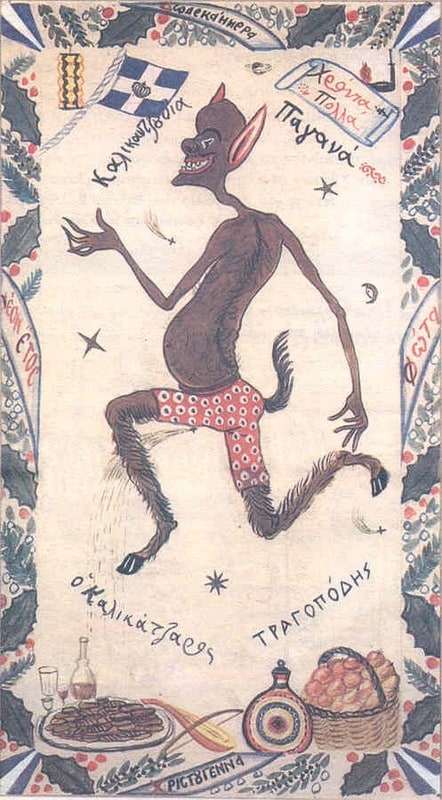
As indicated by the legends of Greece and the Balkan states, between the Winter Solstice and Epiphany, the kallikantzaros arise. For the vast majority of the year, these light dreading trolls lived underground, working their wickedness on the world tree. Consistently, they tirelessly sawed at the trees’ trunk-for once the tree was down, (or so they accepted), the world will fall. Nonetheless, at the colder time of year solstice, the kallikantzaros were drawn by the murkiness of the year over the ground. Thus they required a sixteen-day occasion, causing destruction for mankind all things being equal.
Depictions of the Kallikantzaros change from area to locale, yet all concur that they resembled minimal dark fiends: little, humanlike, yet with long tails and a preference for frogs and worms. The kallikantzaros were likewise visually impaired presumably because of their underground presence. Notwithstanding, this didn’t hinder them from making wickedness.
During the day, individuals were protected from the Kallikantzaros on the grounds that light is dangerous to them. Notwithstanding, around evening time, the little devils were everywhere, sitting tight for casualties. Anybody out alone expected to be careful, for on the off chance that they experienced the kallikantzaros, they would be compelled to convey them about until sunrise. Nor were individuals safe inside, for the kallikantzaros would endeavor to coax them out by mirroring the voices of dead friends and family.
In the event that their casualties didn’t come out, the kallikantzaros would break in, sneaking through breaks in windows or the keyholes of entryways or down the chimney stack. Once inside, they would crush up the furnishings, eat all the food, drink all the beverage and pee on any excess arrangements. In the event that they experienced individuals, the Kallikantzaros would panic them with their terrible red eyes and crazy chuckling and with resentful nibbles and scratches.
Nonetheless, it was conceivable to defeat the Kallikantzaros. A colander set on the doorstep could occupy them from breaking in for an entire evening. The kallikantzaros would endeavor to check the colanders’ openings yet they would never move beyond two for three is a consecrated number and for a kallikantzaros to talk its name was to welcome unavoidable passing. In the event that a Kallikantzaros attempted the fireplace all things being equal, a consuming Yule log could hinder their direction. Consuming an old shoe, or salt and incense likewise warded them off. Bombing that, a dark cross on the entryway would get the job done.
On the sixth January, the Kallikantzaros withdrew for the hidden world again. Presently, the expansion in light, which had been developing discretely since the time the colder time of year solstice was at long last obvious. While the individuals praised the arrival of the sun and the expectation of spring with huge fires, the Kallikantzaros got back to sawing the world tree. Sixteen days of reprieve from them had permitted the tree to recuperate itself totally meaning the kallikantzaros needed to start, once more.
Mari Lwyd
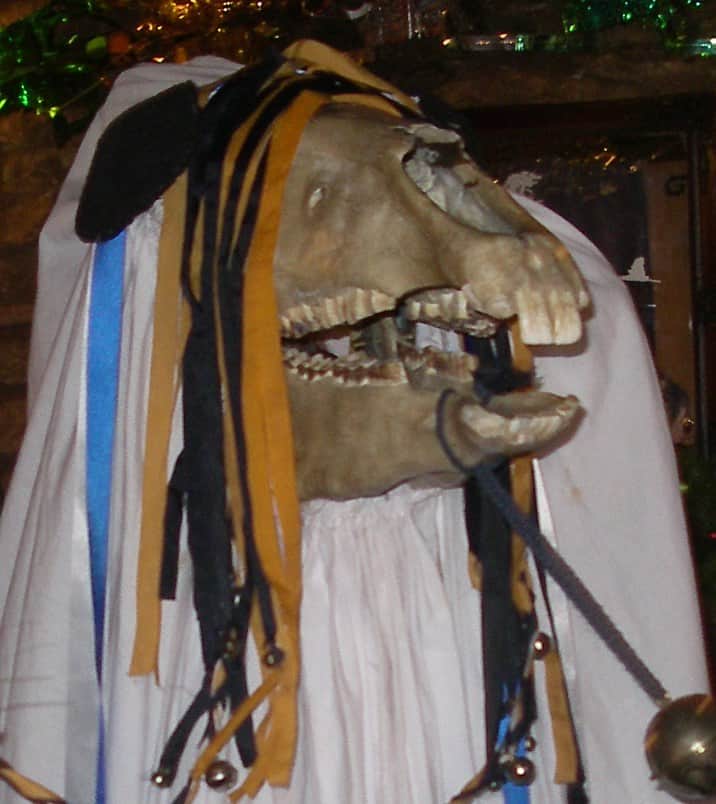
The custom of Mari Lwyd was a customary Yuletide event in South Wales until the mid 20th century-in spite of the fact that it is as of now appreciating something of a restoration. J Evans first depicted the custom in quite a while work, “A Tour through Part of North Wales in the Year 1798 and different occasions.” The convention is a weird one: section wassailing with threats, part fight by tune.
Each Christmastide, eventually after sunset, a gathering of nearby men, would rampage of South Wales’ towns. The men’s appearances were darkened, and they dressed as mummers. All through the night and into the evening, they would move from door to door. They conveyed with them a vile prop: a counterfeit pony built from a sweeping hung over a stick and a genuine ponies skull: the Mari Lwyd. This ponies head was regularly kept covered consistently and just uncovered at Christmas
When a householder addressed the entryway, a two-sided choral discussion with the mummers started a custom referred to in Welsh as the pwnco. The mummers began by singing:
Wel Dyma ni’n dwad
Gy-feillion di-niwad
I ofyn am gennad
I ofyn am gennad
I ofyn am gennad I ganu
(Well here we come
Honest companions
To ask leave
To ask leave
To request that leave sing.)
The householder would then counter with a motivation behind why the gathering ought not enter. In the event that the mortgage holder ran out of reasons, they needed to let the Mari Lwyd in. Once inside, the mummers were offered food and drink while some of them conveyed the Mari Lwyd about the house, its jaws raging at frightened youngsters and grown-ups.
The roots of the Mari Lwyd are as dark as they are dreadful. Some propose the ceremonial has pre-Christian roots, based the ponies’ comparability to comparative figures in Ireland and the Isle of Man. At that point there is the name. The folklorist E C Cawte trusted it signifies ‘Dark Mare,’ as dim in Welsh is Llwyd and Mari could be an incorrect spelling of the English ‘horse.’
Others, in any case, accept that Mari Lwyd is a subsidiary of ‘favored Mary’, a Catholic reference to the mother of Christ riding on a jackass during the Feast of the Ass. This out of date celebration was hung on January 14 and remembered the trip of Mary and Joseph into Egypt. The vast majority today, notwithstanding, acknowledge that the Mari Lwyd is a half breed of both an agnostic ceremony and a Christian blowout.
Jolakotturinn or ‘The Yule Cat”
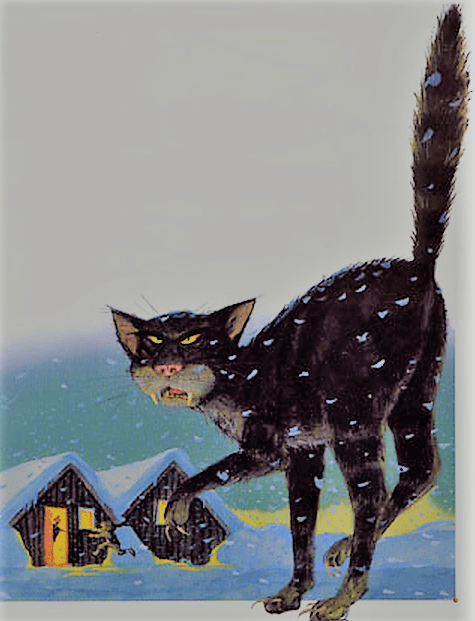
Felines frequently seem nestled into on the Yuletide fireside scenes of some Christmas cards. Be that as it may, Iceland’s’ Jolakotturinn is no lethargic fireside cat. As per old stories, the Yule Cat is an enormous, horrible monster that covers up among the ice and snow of the fruitless Christmas scene sitting tight for its prey.
Seeing the actual feline was sufficiently terrible. As per the sonnet, Jolakotturinn by Johannes ur Kotlum, one of Iceland’s’ best-cherished artists:
“His stubbles, sharp as fibers,
His back curved up high.
Also, the hooks of his shaggy paws
Were a horrendous sight.”
At that point there was how the feline dealt with his casualties. These were poor people or explicitly those without new garments to wear on Christmas Eve. In the event that they were fortunate, the catlike savage just gobbled up the entirety of their food stores, leaving them without a Christmas feast. Nonetheless, in the event that they were unfortunate, they became Christmas supper for the feline.
Kotlum was drawing on the originally composed records of the legend, which date from the nineteenth century, and custom that was without a doubt a lot more seasoned. Notwithstanding, the notoriety of the Yule Cat is by all accounts down to Icelandic sheep ranchers who utilized it as a motivating force for their laborers. The ranchers were anxious to have the fall fleece handled for Christmas. So they offered to remunerate any of their laborers who stayed at work past 40 hours with new garments. In any case, the individuals who didn’t join in were marked as apathetic and recounted the narrative of the Jolakotturinn.
Regardless of whether the grown-up laborers succumbed to the danger of the Yule feline is begging to be proven wrong. The bait of new garments likely guaranteed generally participate with the additional work. In any case, quite before long guardians were discovering Jolakotturinn a helpful danger to use against youngsters reluctant to finish their errands. The feline would realize they had been apathetic, guardians told their laid-back posterity, since they would not be given any new garments for Christmas.
The danger appears to have worked. One Icelandic lady, in an oral history, reviewed how “We were lethargic doing this errand. At that point we were helped to remember the Yule Cat. We felt that was some horrible monster and the exact opposite thing we needed was to be one of his offers”.
The Yule Lads
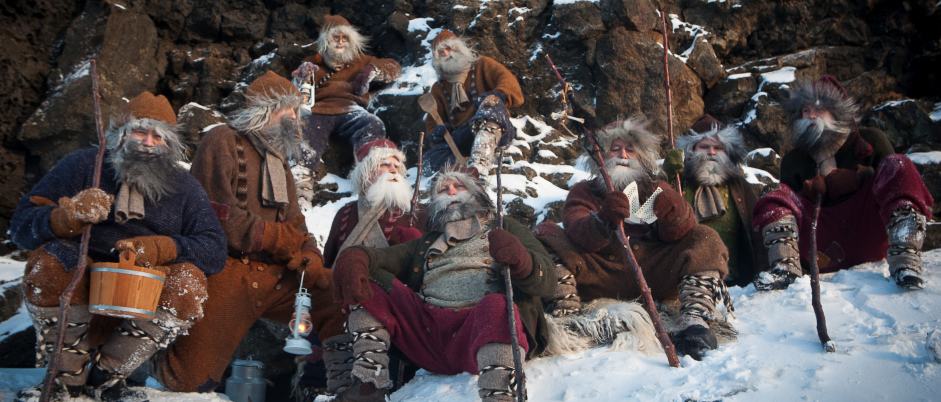
Johannes Ur Kotlum additionally deified another Icelandic Yuletide legend: that of the Jolasveinarnir or The Yule Lads. Following convention, his 1932 sonnet, sonnet Jolin Koma, “or Christmas is Coming’, portrays the Yule Lads as the posterity of the mountain savages Gryla and Lappaluoi. Their mom, Gyra was herself particularly horrendous. She brandished hooves for feet, had thirteen tails, and had a specific preference for stewed youngsters particularly at Christmas.
In the first legends, her thirteen children were minimal better. Each had a specific character going from the devilish, horrendous to the tremendously maniacal. Each Christmas for thirteen days, one chap a day would leave their mountain cavern to drop on the universe of people and make their sort of Christmas ruin. Nowadays either fell before December 25 or subsequent to, contingent upon shifting conventions.
First came Stekkjarstaur, who bugged the sheep. Gilijagaur, who cover up in gorges, sitting tight for a chance to sneak into the cowshed and take milk, followed him. Stufer, who was straightaway, gone into houses and took the food. Pvorusleikir, the spoon hoodlum, followed him and afterward Pottaskefill who took the extras from pots. Next came Askasleikir, who covered up under the beds to take from and scare anybody dozing. Huroaskellir was straightaway, upsetting families with his nighttime entryway pummeling.
Skyrgamus and Bjugnakrakir were less loud yet similarly as upsetting to their human casualties. At that point, the meddling Gluggagaegir showed up, to unnerve individuals by peering at them from an external perspective of their windows. The entryways were assaulted the following night by Gattaperfur, trailed by Ketkrokur and his meat snare lastly Kertasnikir who followed youngsters in obscurity.
Today, this joyful band of wickedness making siblings has gotten considerably more cuddly. Trading their archaic articles of clothing from cherry red Father Christmas suits, they have been changed into the Icelandic form of Santa Claus and his Elves joined. Rather than seeming individually, to burglarize, threaten and scare mankind, they all collaborate to visit the homes of youngsters, setting presents from their perspective, which are set hopefully on windowsills on Christmas Eve. For good youngsters, there will be presents. In any case, a portion of the Yule Lads’ antiquated underhandedness isn’t completely lost. For the terrible ones can anticipate just a spoiled potato or some comparably disagreeable astonishment.
Frau Perchta and the Perchten
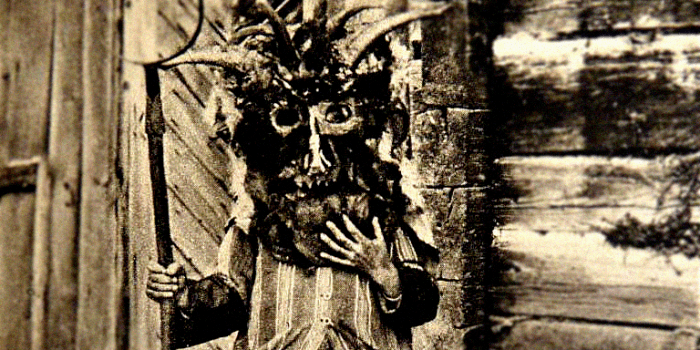
The Alpine regions of Germany and Austria, especially the Tyrol and Salzburg are home to inquisitive Yuletide customs encompassing a witch-like figure called Frau Perchta. Perchta is accepted to be on the loose during the twelve days of Christmas when she and her force of fallen angels descend from the mountain timberlands to threaten – and reward-people. Perchtas’ double reason for existing is addressed by her duel picture. In her benevolent angle, Frau Perchta shows up as a white-robed lady with goodies in hand endowments. Be that as it may, she likewise shows as hag like figure-who tears out the guts of wrongdoers and disposes of them in the junk.
It is accepted that Perchta started as an elevated nature goddess of the woodlands. For the vast majority of the year, this is the place where she remained. Be that as it may, when the year arrived at its cusp between the old pattern of the sun and the new, the goddess and her orderly spirits, the Perchen, would leave the woodland and enter the universe of men. Perchta would guarantee that the spirits who went to her would carry no mischief to great individuals. Notwithstanding, underhanded individuals were at the Perchens’ benevolence.
Thusly, Frau Perchta addresses the old Indo-German dread of the period of cold and dim and the Perchen the solid powers of nature. So individuals created customs to secure themselves, their homes and animals from them. Unique spices were scorched around the colder time of year solstice to protect homes, pens and food stores from these old spirits who could show as cool, yearning and curse. The spices were likewise planned to wake the spirits of the new year or spring.
Records show that by in any event the sixteenth century, if not prior, young fellows had started to take on the appearance of spirits themselves to startle off Frau Perchta and her posse. Wearing wooden covers, known as Schiachperchten, old clothes, and antiquated hides, these concealed young fellows got known as the Perchten themselves. They wandered the open country, endeavoring to frighten away the genuine Perchten thus avert evil.
Today, these rituals of protecting and appeasement have become merry festivals known as Raunachte or smoke evenings, an incredible vacationer attract the high areas. Youngsters actually dress as the Perchten, with their veils and ensembles addressing the great and insidious they bring. The horns, tusks, and teeth address the Perchtens’ capacity to tear at the spirits of their casualties while their absence of ears is so they can’t hear their casualties’ shouts. The cow or horsetail whips conveyed by these human Perchten, be that as it may, are their blessings: old images of fruitfulness or cleansing to bring trust for the coming year.
Krampus
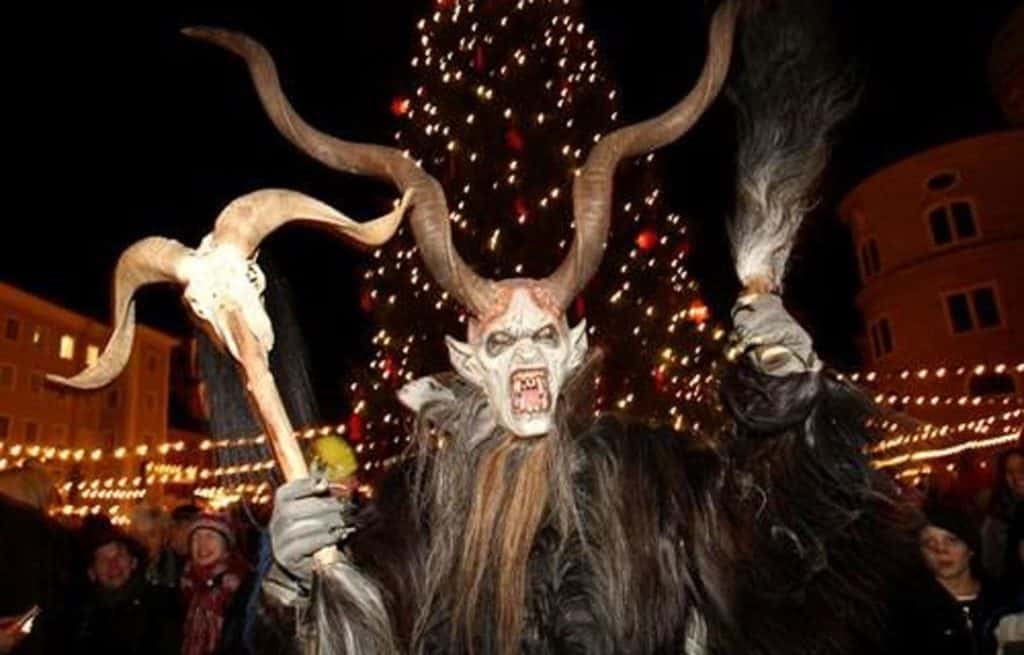
In Austria, Bavaria, Croatia, and parts of eastern Europe, December fifth, is the hour of the Kramostag-the celebration of Krampus. Today, numerous towns in these zones hold celebrations where individuals spruce up and march through the group as Krampus, a half goat, half evil spirit. This advanced celebration has old roots and dates from when it was standard for men to dress in terrifying outfits, moving from door to door, requesting liquor from householders-or, more than likely a horrible retaliation, imitating Krampus himself.
Krampus’ name gets from the mid-high German expression for ‘Hook ‘ recommending this Christmas devil acquired his name at some point between the 11th and fourteenth hundreds of years. He is best summed up in character as the counter dad Christmas, a startling villain like figure who rebuffs those youngsters who get out of hand, beating them or diverting them for suffocating, utilization or damnation itself in a container on his back. While Krampus discards the awful, Santa Claus or rather St. Nicholas himself, reward the great. This odd couple shapes a group however they work independently: St Nicholas on December sixth and Krampus the day preceding.
Notwithstanding, the idea of Krampus is a lot more seasoned than his name, which he was granted when his relationship with St Nicholas started. Like Frau Perchta, a considerable lot of his insignias, for example, the oxtails and groups of branches which he conveys to switch underhanded youngsters are agnostic in birthplace. In the twelfth century, the Catholic church attempted to boycott the Krampus festivities in light of the fact that Krampus looked an excessive amount of like the villain and in certain legends was the child of Hel, the Norse goddess of the hidden world. In any case, his festivals were difficult to smother. So a trade off was reached, and the child of Hel turned into the buddy of a Saint.
In the mid 20th century, Austria’s Christian communist faction additionally attempted to get rid of Krampus with a comparative absence of progress. Thus, Krampus keeps on enduring But as winters’ danger has decreased in current occasions, so has the peril of Krampus. His startling angles are currently watered down, and he shows up on Austrian Christmas cards in a somewhat kitsch or humorous way. Rather than taking kids away to hellfire in his bushel, or in any event, beating them, he is likely to give them a piece of coal.
Hans Trapp
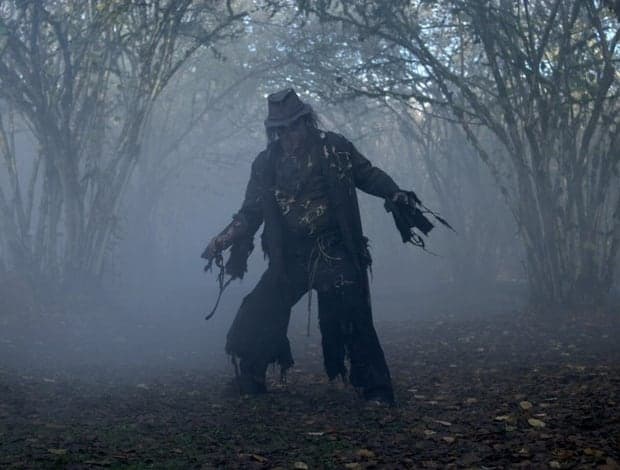
Hans Trapp is another enemy of Santa figure from French/German line district of Alsace Lorraine. Legend tells how Trap started as an affluent man-however eager and evil for sure. He was spoiled to such an extent that he was banned by the Catholic church and offered his spirit to Satan. Presently past reclamation, Trapp was banished to the woodlands. Yet, his evil was felt. Camouflaging himself as a scarecrow by stuffing straw into his dress, he started to go after youngsters.
At some point, or so the legend says, Hans Trapp was going to eat a little kid he had caught when God, exhausted of his wrongdoing, executed him with an electrical discharge. Be that as it may, this was not the finish of Hans Trapp. He kept on wandering the earth, dressed as a scarecrow. Like Krampus, Hans Trapp collaborated with St Nicholas-yet to acquire recovery. While St Nicholas granted presents to the highminded Hans Trapp attempts to convince shrewd youngsters to retouch their methodologies and be temperate not normal for him.
Dissimilar to Krampus, Hans Trapp has his sources in a verifiable personage: Hans Von Troth; a two meter high, late fifteenth-century German knight, with an awful standing. Von Troth had grounds and mansions on the German side of the line with France and was an intensive irritation to chapel and the common people the same.
Von Troth was engaged with a land question with a neighborhood abbot. As a component of the quarrel, he requested the Wieslauter River impeded, denying the close by town of Weissenburg of its water supply. At the point when the abbot grumbled, Von Troth irritably destroyed the damn, flooding Weissenburg and wrecking its economy. In 1491, Von Troth even figured out how to get himself suspended after a similar abbot grumbled about him to the Pope-and Von pledge impolitely wouldn’t go to Rome to give a record of his conduct.
Von Troth’s vile appearance, dangerous conduct and expulsion from the congregation all got stirred up in fantasy and after his demise prompted the production of Hans Trapp as a notice to kids on the most proficient method to not carry on with their lives. Be that as it may, the finish of the genuine Hans Trapp was no grisly secret. For Hans Von Troth kicked the bucket unobtrusively, at home of regular causes in his manor at Bergwartstein.
Le Pere Fouettard
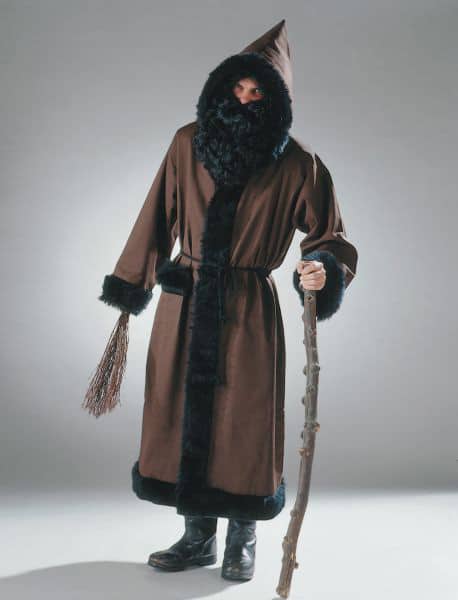
Le Pere Fouettard is a French/Belgium Christmas bogeyman with one foot in history and the other in the agnostic past. Like Krampus and the Perchen, he is connected to the cleaning/rebuffing part of whipping-thus his name “Father Whipper.” Dressed in dull robes, with a dingy face and unkempt hair and a facial hair growth, youngsters can hear him coming from the sound of the slapping of his whip. Le Pere doesn’t work alone; he additionally follows St Nicholas from door to door, going about as his punisher, apportioning coal and beatings to the wicked. His unique agnostic setting is lost, so all things being equal, he is given shape by different more recorded legends and occasions.
The most mainstream story of Le Pere Fouettard dates from around 1150. In this story, La Pere was either a landlord or butcher with especially detestable propensities. At some point, he and his significant other caught three young men on their way to a strict all inclusive school. They looted the young men of their cash and afterward discarded them most frightfully, cutting their throats, cutting them up-and stewing them.
St Nicholas knew about the wrongdoing and revived the youngsters. On seeing this supernatural occurrence, the insidious landlord apologized. He either elected to help St Nicholas as atonement or, more than likely was constrained by the holy person to help him each Christmas, rebuffing the terrible while the Saint compensated the great.
Other, all the more truly irrefutable occasions clarify La Peres’ messy face. In 1552, the northeastern French city of Metz was under attack by the powers of Charles V, the Spanish King, and Holy Roman head. The outrage of the residents drove them to make a similarity of the Emperor and drag it through the city roads and consume it. Simultaneously, the leather treaters of Metz had made a twisted character who rebuffs kids. The two separate likenesses by one way or another wedded themselves together in the famous psyche and got fused into the part of Le Pere Fouettard.
La Befana
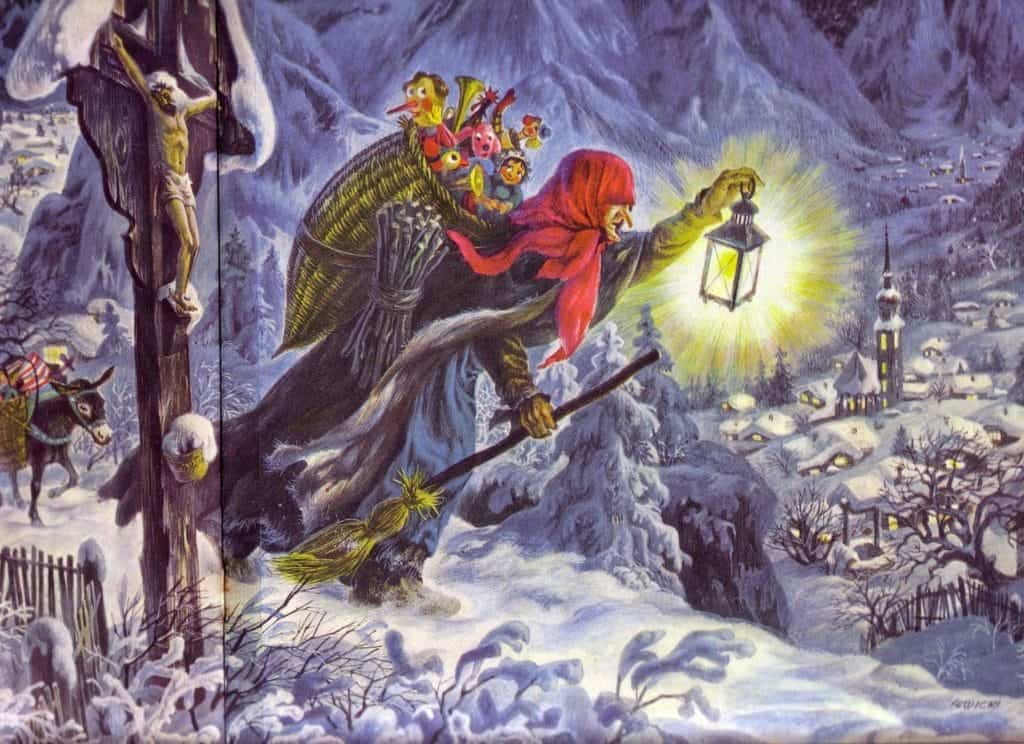
Other than having a hag like appearance, the Italian La Befana isn’t as unnerving as some other European Christmas legends. She was first recorded verifiably in 1549, in stanza by the Italian artist Agnolo Firenzuola. Here La Befana was depicted as an old and terrible lady. She flew on her brush around evening time, at some point between January 5 and sixth. She would arrive on the tops of houses and, rather like Father Christmas, entered them through the smokestack, leaving candles and presents for the great kids and coal for the awful. In the event that they were astute, the householders would likewise have made La Befana a contribution of cakes and wine.
This Italian Mother Christmas originates before the approach of St Nicholas in Italy. Her name is gotten from the Italian for Epiphany: January sixth, the most recent day of Christmas. This is the day the Magi visited Christ. It is likewise the customary time for individuals to stamp the finish of the dull long periods of Winter times and to commend the development of the light of the sun. Both of these angles consolidate in the legend of La Befana.
The legend tells how La Befana was an old Italian widow at the hour of the introduction of Christ. While clearing out her home, she was visited by the Magi who were en route to discover the Christ kid. The Wisemen were lost, however La Befana had the option to guide them by advising them to follow a huge and bizarre star. Thankful, the Magi welcomed the old woman to go along with them on their excursion. Nonetheless, La Befana rejected as she said she had a lot of housework to do.
Nonetheless, when she understood she had passed up seeing the child of god, La Befana was loaded with lament. Thus, rather than utilizing the brush to clean, she took to the sky on it and started to wander Italy. Each Epiphany, she imitated The Magi by presenting her own endowments on great youngsters and rebuffing the individuals who were terrible with a piece of coal.
Notwithstanding, La Befana is more established than Christ. She begins from the image of the ‘old woman’ consumed in the squares of Italian towns and towns toward the finish of each Christmas. Her incidental award of coal, similar to the whippings of Krampus and the Preschen, was not initially expected as a discipline, yet rather addressing the purifying force of the Epiphany fire a similar imagery saturated in her brush.
Belsnickel
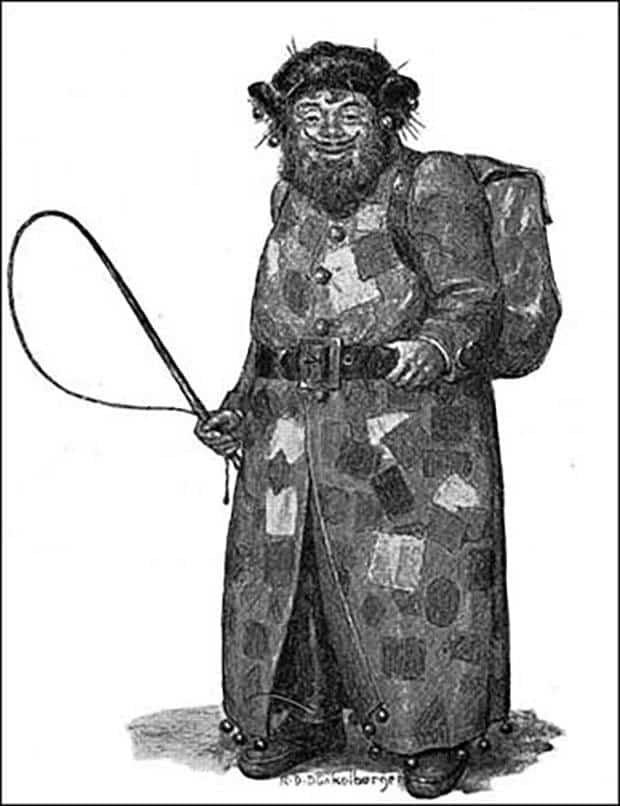
Another whipping character from Germany that has flourished in the US territory of Pennsylvania is that of Belsnickel. Covered, and wearing worn out garments and hides a lot of like the high Christmas bogeymen-Belsnickel visits youngsters in the beginning of December. He comes outfitted with a sack of desserts and a whip. In any case, Belsnickels’ point isn’t to rebuff the mischievous and prize the great however to convince all youngsters to repair their conduct.
Belsnickels’ name coordinates his double reason. It comes from the German for a smack, suffixed with ‘nickel’ for St. Nicholas. This is on the grounds that, in contrast to a large number of his other European partners, Belsnickle consolidates the considerate blessing giving part of St Nicholas with a more wild happy presence.
Initially local of the Rhineland, Belsnickel went with German migrants to Pennsylvania in the mid nineteenth century. The Belsnickel custom started to be recorded soon a short time later. On December fifth, not long before St Nicholas day, gatherings of young fellows were noticed sprucing up in skins and hides to observe ‘Belsnickle Night.’ They meandered the roads of their settlements, shaking chains and chimes and acting rambunctiously, in impersonation of the ceremonies of Krampus.
Somewhere else, Belsnickel, himself was on the loose. Jacob Brown of Maryland depicted a visit from Belsnickel at some point around 1830. Browns’ Belsnickel was likewise called Kriskinkle and here and there even The Christmas Woman-since he regularly wearing ladies’ garments. He showed up half a month prior to Christmas. The figure of Belsnickel was most likely embraced by the Father of the house, who had recently absented himself under the misrepresentation of work.
As indicated by Brown, at some point after dull, a puzzling figure in a long robe and hood showed up, bearing a sack packed with treats: cakes, foods grown from the ground and a long hazel stick. This character would rap on the window of the house and request induction. The offspring of the house would possibly give him access on the off chance that he addressed an inquiry or sang them a tune. In any case, once inside, Belsnickel would disperse the substance of his sack, and the kids would jump into gather the treats.
As the youngsters fell upon the sweet treats, Belsnickel meandered among them, turning them on their backs. This ‘beating’ came to be viewed as a notice towards great conduct, however like so numerous other Christmas switchings, Belsnickels’ beatings had a previous importance. Like the whippings of the Krampus and the Perchen, it was at first regulated as a lucky trinket for the youngsters’ prosperity.